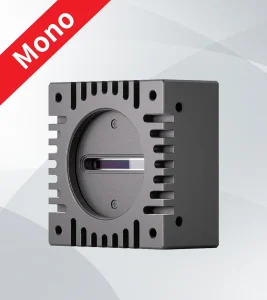The use of machine vision cameras has transformed quality control processes with a substantial increase in speed, precision and consistency. At an average rate 1000+ parts per minute (ppm) can be inspected, however for high speed systems this frame a second count raised above 125 fps. This in turn helps manufacturers recognize defects undetected by human inspectors, resulting in higher quality products overall along with less waste and rework.
Machine vision cameras are extremely accurate due to their high-resolution image capture potential — usually more than 12 megapixels. This fine detail provides even hairline defects — like micro-cracks in electronic components or surface scratches on glass, for example —m will be spotted well before these items have gotten too far along the production process. Machine vision cameras used in the manufacturing of semiconductors, where components can be microns or even nanometers is one example like this stringent requirement for function and maintenance.
Machine vision cameras offer consistency so automated quality control systems benefit from this to determine the pass/fail outcome of a product. These systems do not tire as a human inspector would and so each product is inspected with the same level of sanity. This decreases the error margin to almost null, resulting in greater customer satisfaction and lesser returns. Industries such as the automotive sector, which is forced to issue recall notices for even minor defects in their products due to liability exposure are saved hundreds of millions annually by machine vision cameras that can spot a faulty component at full speed without any risk or delay.
Robotically integrated machine vision systems streamline production lines. Robots are able to bend quickly by using cameras with a CMOS sensor that makes fast image processing possible. Vision-guided robots have played a critical role in this transformation, especially when it comes to the packaging industry with inspection speeds over 200 units per minute.
According to automation experts and leaders like Elon Musk, “Consistency & Reliability are the heartbeats of scalable manufacturing.” This philosophy is embodied in machine vision cameras that ensures that a similar check is carried out every time irrespective of various production cycles.

Machine vision also significantly boosts quality control with the help of data analysis techniques. This means that these cameras do more than just take pictures, they use AI algorithms to analyze those images in real-time. This can provide real-time feedback on defect rates and other key process metrics, allowing manufacturers to use this data towards process improvements. In the event that a production line starts producing more defects, for example in this case it can also notify operators, preventing downtime and malfunctioning goods.
In conclusion, the machine vision camera offer unparalleled productivity and accurateness which make them a necessity of modern quality control systems. They improve the productivity and profitability of manufactures by making sure that every product is manufactured in accordance with strict quality standards.